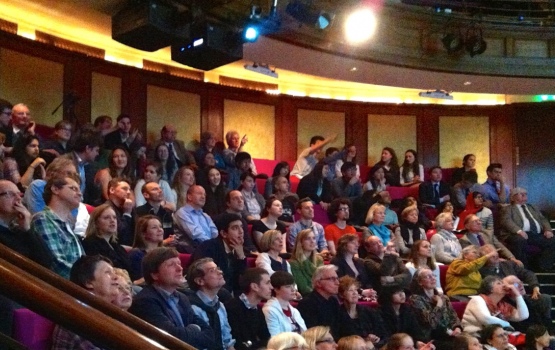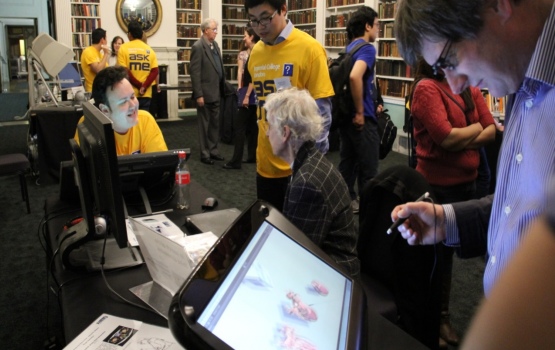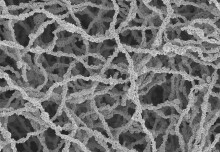
Imperial researchers demonstrate an angioplasty in simulated cath lab environment

Professor Roger Kneebone and Dr Fernando Bello demonstrated simulations of keyhole surgery in a sold out event on 2 April at the Royal Institution.
The audience learned how surgeons operate from a distance through manipulating devices in areas of the body they can see but cannot touch.
In the first demo, the team simulated an elective angioplasty – a procedure routinely performed to unblock a patient's artery through the insertion of a coronary stent. Professor Roger Kneebone, Professor of Surgical Education in the Department of Surgery and Cancer, explained that the surgeon uses external X-ray imaging to navigate the catheter threading, normally inserted through the leg or arm, and so ensure that the end of the tube arrives at the precise point of the blockage.
He emphasised how surgeons operate at a distance by fixing their eyes on the target and knowing the route to get there – an exercise that relies on good hand-eye coordination and knowledge of the human anatomy. This is akin to travelling from Westminster to St Paul’s on the London underground, and understanding the route to their destination through prior knowledge of the tube map.

NOTES demonstration
The second demonstration was of Natural Orifice Transluminal Endoscopic Simulator (NOTES), a simulator prototype pioneered at Imperial College London and currently being evaluated by surgeons. This novel approach allows “scarless” abdominal operations to be performed with an endoscope passed through a natural orifice, which can be used to retrieve a gallbladder through the mouth.
Dr Fernando Bello explained that the simulator (a haptic device) allows the endoscope to negotiate the bends and twists inside the body, and combines both external views of the endoscope and internal views of the stomach and surrounding tissues. The surgeon can introduce instruments such as grasper, clipper, scissors and diathermy tool by feeding them through the endoscope tubing.
Interactive stations
Following the lecture, the public had the chance to try their hand at cutting edge surgical simulators designed to help train new generations of specialists. Seven interactive stations, led by Dr Bello and presented by the engineers who developed the new technology and the clinicians who would be using these tools in their training, included demonstrations of wrist surgery simulators, ultrasound-guided needle punctures, 3D models from patient imaging, augmented reality, computer based simulated environments using the Oculus Rift and a display of optical illusions applicable to the surgical world, including a magician illustrating neurological tricks.
This event was the second in the series of ‘Surgery and the Senses’, following ‘Teaching Your Fingers To See’ which took place in May 2013. A long term member of the Royal Institution said: ‘The event was as good as the first one and is one of the best events I have ever attended at the Royal Institution’. Martin Davies, programme manager at the Royal Institution, was very pleased with the team’s enthusiasm and is highly anticipating the final installment of the series which will take place next year. Follow @exploresurgery on Twitter and Facebook to keep updated on future events.
With thanks to Miss Zinah Sorefan, Distributed Simulation (DS) Research Officer and Events Coordinator, for contributing to the 'Interactive Stations' section.

Article text (excluding photos or graphics) © Imperial College London.
Photos and graphics subject to third party copyright used with permission or © Imperial College London.
Reporter
Dr Sam Hiew
Communications and Public Affairs

Contact details
Email: press.office@imperial.ac.uk
Show all stories by this author











Leave a comment
Your comment may be published, displaying your name as you provide it, unless you request otherwise. Your contact details will never be published.